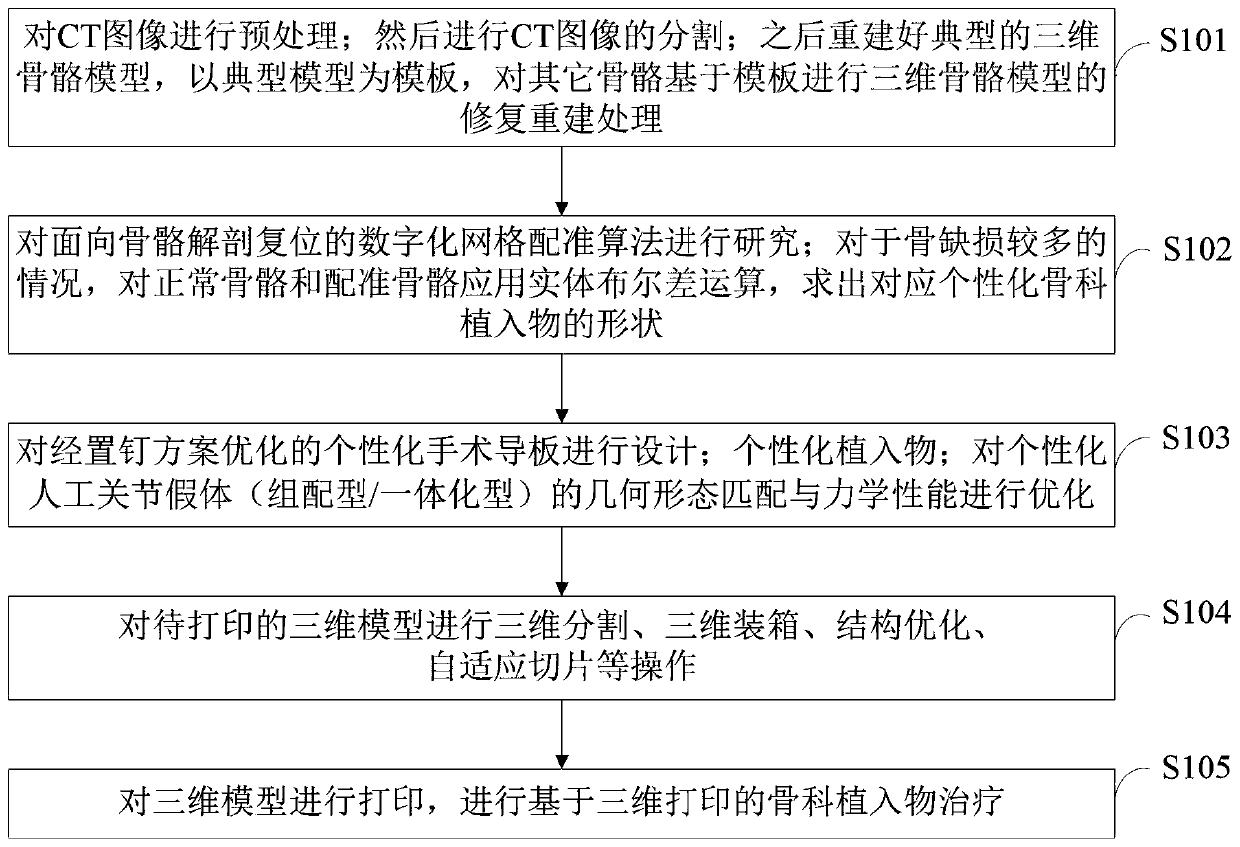Method for constructing 3D printed individual orthopeadic implant and enhancing biomechanics of 3D printed individual orthopeadic implant
A 3D printing and biomechanics technology, applied in medical science, computer-aided surgery, internal fixator, etc., can solve problems such as difficult to adapt to high-intensity long-term use, heavy interactive workload, and collapse of diseased bone defects, etc. and automatic optimization, good biomechanical properties, and strong interdisciplinary effects
- Summary
- Abstract
- Description
- Claims
- Application Information
AI Technical Summary
Problems solved by technology
Method used
Image
Examples
Embodiment 1
[0113] The 3D printing personalized orthopedic implant construction and biomechanical optimization treatment method provided by the embodiment of the present invention includes the following steps:
[0114] Step 1: Reconstruct and optimize the 3D bone model based on prior knowledge; first, preprocess the CT image; then segment the CT image; then reconstruct a typical 3D bone model, and use the typical model as a template to model other bones based on The template is used for repairing and reconstructing the three-dimensional bone model.
[0115] Step 2: Research on the digital grid registration algorithm for bone anatomical restoration; for the case of many bone defects, apply entity Boolean difference operation to normal bone and registered bone to find the shape of the corresponding personalized orthopedic implant .
[0116] Step 3: Design the personalized surgical guide plate optimized by the nail placement scheme; personalize the implant; optimize the geometric shape matc...
Embodiment 2
[0120] (1) Reconstruction and optimization of 3D bone model based on prior knowledge
[0121] The rapid generation and automatic optimization of 3D bone models are the basis for the application of 3D printing in orthopedic diagnosis and treatment. However, the current quality and automation of 3D bone reconstruction based on CT images is still low. The present invention intends to make full use of prior knowledge of human bone CT images and geometric shapes to improve the accuracy and automation of two-dimensional image segmentation and three-dimensional bone model reconstruction optimization.
[0122] For normal human bones, bones of the same type generally have the same structural features. Therefore, CT images can be preprocessed, a typical three-dimensional bone model can be reconstructed, and the typical model can be used as a template to repair and reconstruct other bones based on the template. In the segmentation of CT images, by establishing a corresponding relations...
PUM
 Login to View More
Login to View More Abstract
Description
Claims
Application Information
 Login to View More
Login to View More - R&D Engineer
- R&D Manager
- IP Professional
- Industry Leading Data Capabilities
- Powerful AI technology
- Patent DNA Extraction
Browse by: Latest US Patents, China's latest patents, Technical Efficacy Thesaurus, Application Domain, Technology Topic, Popular Technical Reports.
© 2024 PatSnap. All rights reserved.Legal|Privacy policy|Modern Slavery Act Transparency Statement|Sitemap|About US| Contact US: help@patsnap.com










